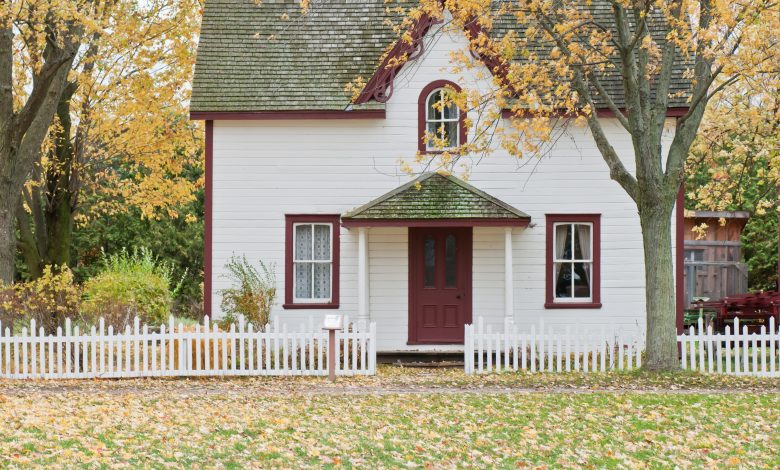Should You Take out a Second Mortgage to Pay off Student Loans?

Did you know that there has been a significant increase in home values throughout the nation? This means that homeowners could choose to replace their student debt using a second mortgage. However, is it a wise decision to swap out your student debt to have real estate financing? Also, could you pay off your debts using real estate financing immediately or within a few years?
Home Equity and Student Loans: It’s Not Just About Rates
Federal student loans often have interest rates of about 4.45 – 7%, depending on a variety of factors. Still, these loans have lower rates because they are backed by the government and Congress sets the interest amount at the beginning of the school year each year. Often, second mortgages are cheaper and have similar interest rates, so does it make sense to get a home equity loan to dump your school debt?
If the question was just about rates, then it could be a simple answer. However, there are many differences between school debt and real estate equity. For example, student debt features several options that aren’t often available through a home equity loan. These include:
Deferment
Student loan deferments allow you to postpone the repayment of the loan under specific conditions. For example, it is possible to temporarily put off repaying the loan if you join the military or enroll in a graduate school.
Those who have a Perkins, Subsidized Stafford, or Direct Subsidized loan are going to find that the loan doesn’t accrue interest at this time. However, any other federal student loan does accrue interest, even during the deferral. If you don’t pay the interest during the deferment period (and you don’t have to do so), it is then added to the principal and balance.
Forgiveness
Sometimes, lenders can outright forgive the loan in its entirety based on your employment status. For example, doctors, teachers, and other similar careers can help you get your student loan balance forgiven for many reasons. Most often, it is if you agree to work in an under-served area or take a pay cut.
Likewise, if you work for the state, federal, tribal, or local government, a nonprofit organization, or the Peace Corps/AmeriCorps, the lender might cancel your remaining student debt after you’ve worked there for ten years.
Forbearance
Forbearance works similarly to deferment because you can still temporarily suspend the loan repayment process. Lenders often do this if you fall into a financial hardship that qualifies. During this time, the principal payments are postponed, though interest still accrues. You can pay the interest on the loan when it comes due, or you can choose to have it added to the balance.

Why Would You Take Out a Second Mortgage to Repay Student Loans?
With so many advantages available through student loans, you may wonder if it makes sense to replace your education debt using a second mortgage. It can because:
- You might not qualify for forbearance, deferment, or forgiveness.
- Your payment could be much lower, which improves cash flow when you need it most at the start of your new career.
- You might be able to save more money using real estate financing. The size of that saving depends on many factors, such as the cost of a new financing scheme, current interest rates on your loan, and how long the loan has been outstanding.
Ways to Refinance Student Debt
You can find many ways to refinance your student loan debt. We look into all the options below:
A Second Mortgage
Let’s say that you have a student loan debt of $65,000 with a home that’s valued at $300,000. Your existing mortgage is right at $150,000. Of course, you have good credit scores and can qualify for a second mortgage.
If you take one out for $65,000, that raises your mortgage debt to $215,000. Now, your loan-to-value (LTV) ratio is at 72%, which is extremely low. Therefore, you are seen as a lesser risk to lenders. This, in turn, can help you get lower interest rates on the new mortgage financing.
Often, second mortgages have terms up to 30 years long. This means that your monthly payments might be more affordable. Using the example above, you finance $65,000 at a five-percent interest rate for 30 years and only pay about $349 each month for interest and principal.
HELOC
Alternatively, you may consider a HELOC (Home Equity Line of Credit), which lets you swap out your student debt instantly for real estate debt.
For example, if your property has that fair market value of about $300,000 and a lender is going to allow you a 75% CLTV (Combined Loan-to-Value ratio), you get financing of about $225,000. That equals the amount of the first mortgage ($150,000) plus $75,000 in credit.
You can easily settle your student loans and have another $10,000 to use for other purposes. It’s also possible to put that money in a savings account to draw interest and use it in an emergency.
Still, you have to understand how HELOCs work. Generally, they can last up to 15 years and work similarly to a credit card.
For example, you could have a five-year drawing period where you can withdraw money from your HELOC account. This means you can tap it out completely, pay down the balance, and then reuse it up to the credit limit again, almost all without any restrictions.
During that draw period, interest rates are variable, so it can be hard to budget for repayment.
There is also a ten year repayment period. During that time, you must pay off the full debt and cannot make any more withdrawals on the account. Again, interest rates are likely to be variable, but sometimes, you can find a HELOC that allows you to lock on a fixed rate when you stop withdrawing any money.
The issue here is that repayment periods are only ten years, so they can be pretty high. For example, if you owed $65,000, have to pay it off in ten years, and have 5% interest rate, you are going to pay $689 a month.
Tenure Along with Second Mortgages
When looking at the basic mechanism of HELOCs and second mortgages, you may also want to think about tenure. This is the length of time you plan to own your home. About four years ago, typical ownership periods were about ten years, according to the NAR (National Association of Realtors). However, young homeowners and first-time buyers often spend less time in their homes.
Generally, young homeowners kept the property for about four to five years. One in five people sold their homes in as little as two or three years.
This is an important consideration because, when you borrow against the property and then choose to sell it, you can’t extend the loan repayment. Your HELOC or second mortgage has to be repaid once you sell the house.
That could be a good thing if you want to eliminate debt for good. However, it could also cause many problems if you desire to continue financing at a lower rate over an extended period of time with the home sale proceeds going to other things.
Tenure is also essential to think about when you’re trying to choose between HELOCs and fixed second mortgages. HELOCs can start out with lower interest rates, but the second option is safer because it might be a higher rate, just fixed.
HELOCs can be less risky the less time you plan to keep your house because the rate isn’t likely to increase with a shorter time frame.

Your Home Might Be at Risk
Another thing you have to consider is that your house is on the line here. While you’re shrinking the interest from the student loan, you are growing the mortgage bill. If you can’t make the monthly payments, you may default. Should that happen, the lender has the right to foreclose on the house and take it away from you. This leaves you without a home, and you might still be required to repay the loan.
Of course, if you choose a HELOC instead of a second mortgage, the home isn’t at risk quite as much. Still, you have to remember that whatever money you borrow over those five years has to be paid back in ten years. If you only take out enough to pay off your debts and leave the rest untouched, paying it off bit by bit, you have 15 years’ time to pay it off. This can be beneficial and it can work, but emergencies are bound to pop up during those five years.
Getting a Second Mortgage
If you have decided that you want to refinance, it is similar to the steps you took to get the first one. These include:
- Qualifying: The lender is going to look at your credit report and score, equity in the home, income, and property values to see if you qualify. If those numbers are higher, you have a better chance of getting approved.
- Get Everything Together: Regardless of whether it’s your second or first, you have to get all of the information together. This includes debt-to-income ratio information, credit scores and reports, and the documents from the first mortgage. Often, if you apply for a second one with the same lender, this information is going to be on file.
- Gather the Documents: You are going to have to show proof, so you’re going to need housing papers and financial statements. These can include tax documents and paystubs. Your lender could have different document requirements and can let you know what to bring.
- Shop: It’s important to understand that you don’t have to take out that second mortgage with the original lender. Make sure you shop around to get the best rates possible on whichever loan you choose. Compare fees, loan terms, and interest rates.
A second mortgage might be harder to get than your first one because there is a bit more risk for the lender. Plus, there is a higher chance of foreclosure issues. Regardless, if you have student loans that are hard to pay off, it might be a good idea to consider second mortgages. You can borrow a lot of money, often more than you could get from a personal loan. Plus, you may get more favorable interest rates. Just make sure you can pay off the mortgage before making the final decision.



